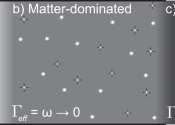Last update:
Physics news
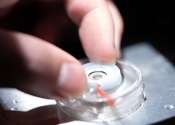
How light can vaporize water without the need for heat
It's the most fundamental of processes—the evaporation of water from the surfaces of oceans and lakes, the burning off of fog in the morning sun, and the drying of briny ponds that leaves solid salt behind. Evaporation ...
General Physics
7 hours ago
0
67

CMS Collaboration observes new all-heavy quark structures
For over a decade, the CMS Collaboration, a large team of researchers based at different institutes worldwide, has been analyzing data collected at the Compact Muon Solenoid, a general-purpose particle detector at CERN's ...
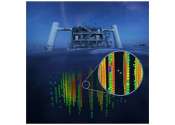
Hunting for the elusive: IceCube observes seven potential tau neutrinos
Researchers at the IceCube Neutrino Observatory in Antarctica have found seven signals that could potentially indicate tau neutrinos—which are famously hard to detect—from astrophysical objects.

The big quantum chill: Scientists modify common lab refrigerator to cool faster with less energy
By modifying a refrigerator commonly used in both research and industry, researchers at the National Institute of Standards and Technology (NIST) have drastically reduced the time and energy required to cool materials to ...
Condensed Matter
10 hours ago
0
61

Spintronics research shows material's magnetic properties can predict how a spin current changes with temperature
Spintronics is a field garnering immense attention for its range of potential advantages for conventional electronics. These include reducing power consumption, high-speed operation, non-volatility, and the potential for ...
Condensed Matter
10 hours ago
0
64

Record electron temperatures for a small-scale, sheared-flow-stabilized Z-pinch fusion device achieved
In the nine decades since humans first produced fusion reactions, only a few fusion technologies have demonstrated the ability to make a thermal fusion plasma with electron temperatures hotter than 10 million degrees Celsius, ...
Plasma Physics
12 hours ago
0
115

Novel method could explore gluon saturation at the future electron-ion collider
The U.S. nuclear physics community is preparing to build the electron–ion collider (EIC), a flagship facility for probing the properties of matter and the strong nuclear force that holds matter together. The EIC will allow ...
General Physics
10 hours ago
0
11

Tailoring electron vortex beams with customizable intensity patterns by electron diffraction holography
A new research study from Opto-Electronic Advances discusses tailoring electron vortex beams with customizable intensity patterns by electron diffraction holography.
Optics & Photonics
7 hours ago
0
33

Manipulating the geometry of the 'electron universe' in magnets
Researchers at Tohoku University and the Japan Atomic Energy Agency have developed fundamental experiments and theories to manipulate the geometry of the "electron universe," which describes the structure of electronic quantum ...
Condensed Matter
14 hours ago
0
35
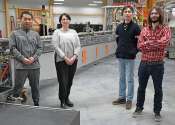
Study shines light on properties and promise of hexagonal boron nitride, used in electronic and photonics technologies
Single-photon emitters (SPEs) are akin to microscopic lightbulbs that emit only one photon (a quantum of light) at a time. These tiny structures hold immense importance for the development of quantum technology, particularly ...
Condensed Matter
18 hours ago
0
112
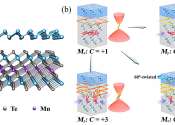
Tunable quantum anomalous Hall effects in van der Waals heterostructures
The quantum anomalous Hall effect (QAHE) has unique advantages in topotronic applications, but realizing the QAHE with tunable magnetic and topological properties for building functional devices is still a key scientific ...
Condensed Matter
19 hours ago
0
14
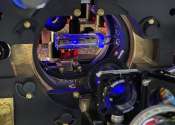
Announcing the birth of QUIONE, a unique analog quantum processor
Quantum physics requires high-precision sensing techniques to delve deeper into the microscopic properties of materials. From the analog quantum processors that have emerged recently, quantum-gas microscopes have proven to ...
Quantum Physics
Apr 22, 2024
0
299
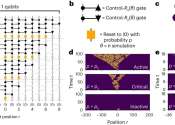
Steering toward quantum simulation at scale
Researchers simulated a key quantum state at one of the largest scales reported, with support from the Quantum Computing User Program, or QCUP, at the Department of Energy's Oak Ridge National Laboratory.
Quantum Physics
Apr 22, 2024
0
22
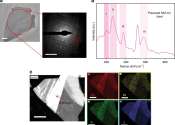
New 2D material manipulates light with remarkable precision and minimal loss
Responding to the increasing demand for efficient, tunable optical materials capable of precise light modulation to create greater bandwidth in communication networks and advanced optical systems, a team of researchers at ...
Condensed Matter
Apr 22, 2024
0
86
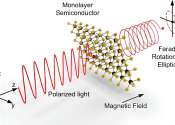
Study shows ultra-thin two-dimensional materials can rotate the polarization of visible light
It has been known for centuries that light exhibits wave-like behavior in certain situations. Some materials are able to rotate the polarization, i.e. the direction of oscillation, of the light wave when the light passes ...
Condensed Matter
Apr 22, 2024
1
56

New models of Big Bang show that visible universe and invisible dark matter co-evolved
Physicists have long theorized that our universe may not be limited to what we can see. By observing gravitational forces on other galaxies, they've hypothesized the existence of "dark matter," which would be invisible to ...
General Physics
Apr 22, 2024
0
80
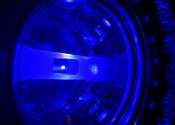
Superradiant atoms could push the boundaries of how precisely time can be measured
Superradiant atoms can help us measure time more precisely than ever. In a recent study, researchers from the University of Copenhagen present a new method for measuring the time interval, the second, mitigating some of the ...
General Physics
Apr 22, 2024
0
107
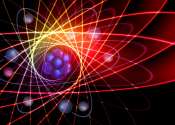
Bounding the amount of entanglement from witness operators
A team of researchers has proposed an approach to quantify entanglement using the standard entanglement witness procedure under three common experimental scenarios. Their work is published in Physical Review Letters.
Quantum Physics
Apr 22, 2024
0
62
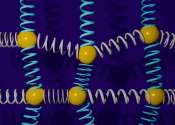
Springing simulations forward with quantum computing
Though "coupled oscillations" may not sound familiar, they are everywhere in nature. The term "coupled harmonic oscillators" describes interacting systems of masses and springs, but their utility in science and engineering ...
Quantum Physics
Apr 22, 2024
0
37
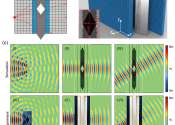
Realization of an ideal omnidirectional invisibility cloak in free space
A team led by Prof. Dexin Ye and Prof. Hongsheng Chen from Zhejiang University, and Prof. Yu Luo from Nanyang Technological University conducted research on the practical implementation of full-parameter transformation optical ...
Optics & Photonics
Apr 22, 2024
0
3
More news

Toward a unified theory for dynamics of glassy materials

Fusion-energy quest makes big advance with EU-Japan reactor

Research team resolves decades-long problem in microscopy

Smoother surfaces make for better accelerators

First curved data link side-steps key 6G wireless challenge

Estimating uncertainty in atomic spectroscopy

Beyond equilibrium: Scientists investigate Floquet Fermi liquids

Spintronics: A new path to room temperature swirling spin textures
Other news

New evidence found for Planet 9

World's chocolate supply threatened by devastating virus

Fruit fly pest meets its evolutionary match in parasitic wasp

Creating an island paradise in a fusion reactor

Attosecond imaging made possible by short and powerful laser pulses

How logic alone may prove that time doesn't exist

A universal path for converting light into current in solids

Magnetism boosts hydrogen production in model catalysts

Gigahertz-rate switchable wavefront shaping by LNOI-empowered metasurface

Study uses thermodynamics to describe expansion of the universe

New small molecule helps scientists study regeneration


















































